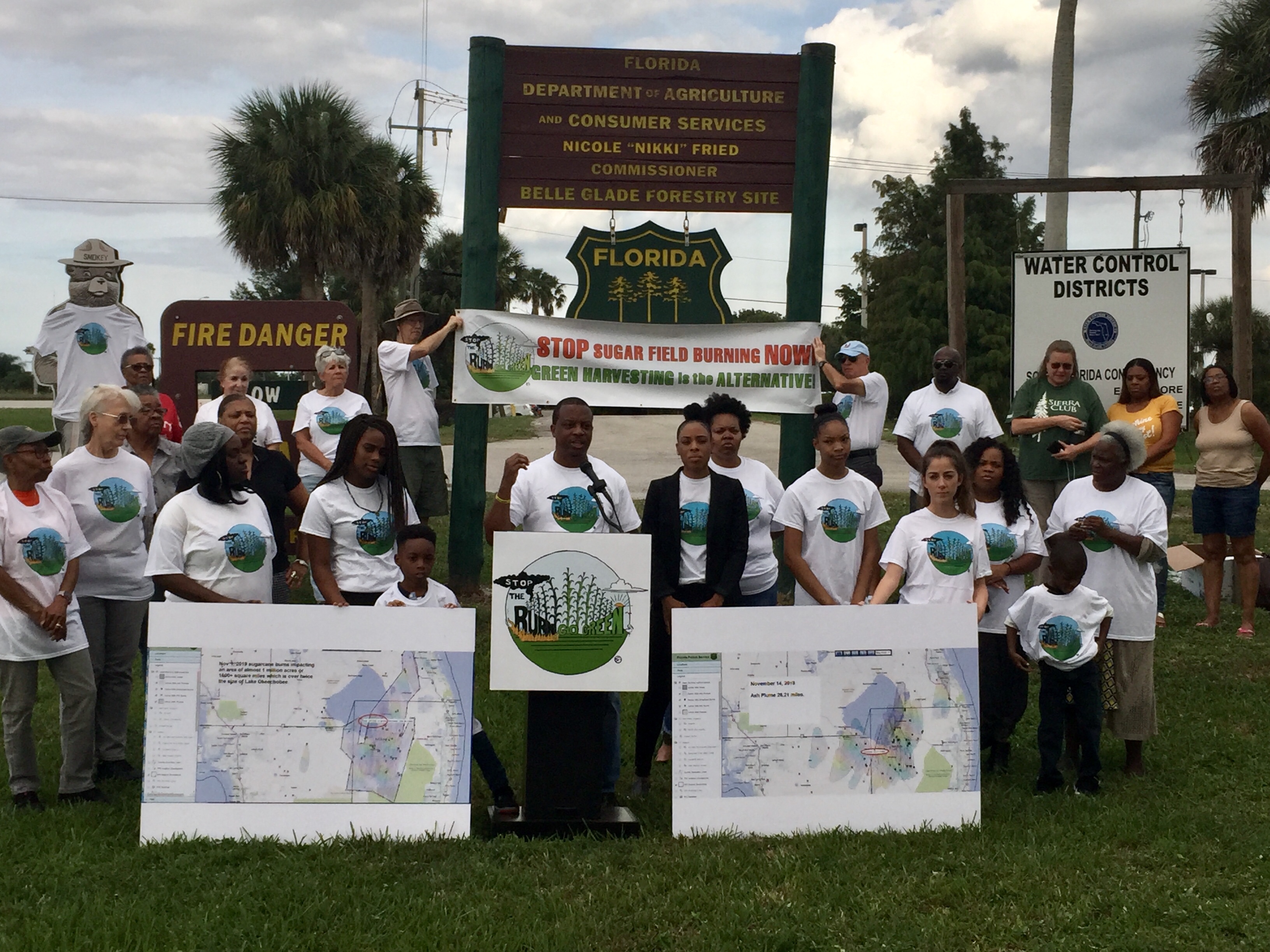Cane sugar is ubiquitous in the US – you might have just emptied a packet of it into your cup of coffee or tea or used it to sweeten a baked dessert. And yet behind this commonplace item that most of us use daily is a deadly practice. To harvest over 50 percent of its US production, cane sugar producers set fire to approximately 400,000 acres of sugarcane fields in and around the Everglades Agricultural Area (EAA), affecting over 100,000 residents in and around Lake Okeechobee in South Florida. Every year, from October through May, the burning removes the leaves and tops of the sugarcane plant so only the sugar bearing stalk is harvested and processed.
The result is devastating for nearby residents. Pre-harvest sugar field burning releases toxic smoke and ash into the air that locals refer to as “black snow.” In the areas where this antiquated burning practice is employed, two to three South Floridians die prematurely each year because of the exposure.
Residents say they struggle to breathe, and studies show that the pollution contributes to increased reports of respiratory distress, in addition to other respiratory, renal, cardiovascular, osteomuscular, ocular and dermatological health risks. In the Glades (western Palm Beach County) just 40 miles west of Mar-a-Lago, folks are at significantly higher risk for cancer and respiratory hazards than their fellow Floridians. This practice is so harmful that other countries like Brazil, which produces about 20 times as much cane sugar than the US, have outlawed it in favor of modern, sustainable, burn-free green harvesting.

Individuals protesting sugarcane burning in Florida (photo courtesy of Patrick Ferguson)
And yet, not all South Floridians are being impacted in the same way: sugarcane burning is disproportionately harming the health and economy of low-income communities and communities of color. Discriminatory burn regulations based on wind direction make sure more affluent communities to the east receive prioritzed protection and are spared when the wind blows their way.
Meanwhile residents in and around the Glades, who are predominantly lower-income communities of color, are not spared. When the wind blows toward them, those burning permits are granted, leaving them almost completely unprotected from the smoke and ash. As a result, the predominantly Black and Brown communities in western Palm Beach County, which are surrounded by over 75 percent of the total sugarcane acreage in Florida, disproportionately bear the harmful effects of sugarcane burning.
Beyond this, there are troubling environmental implications. Sugarcane field burning causes pollution of nearby waterways through acid rain, increased greenhouse gas emissions, and depletion of soil nutrients and microbial life, along with harm to wildlife caught in the flames.
But there is an alternative. Instead of pre-harvest burning, sugar producers could employ green harvesting and repurpose plant waste into mulch, biofuels, biochar, tree-free paper products, cattle feed, or other uses. This practice is used around the world, including in parts of Louisiana and even by Florida sugar growers under limited circumstances.
Visit the Stop The Burn-Go Green Campaign’s website to learn more about how you can get involved and raise more awareness about this important environmental justice issue:
